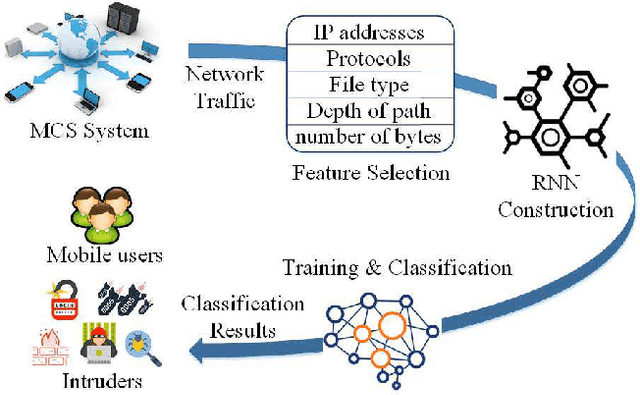Dongjin Xu
Secure Mobile Crowdsensing with Deep Learning
Jan 23, 2018



Abstract:In order to stimulate secure sensing for Internet of Things (IoT) applications such as healthcare and traffic monitoring, mobile crowdsensing (MCS) systems have to address security threats, such as jamming, spoofing and faked sensing attacks, during both the sensing and the information exchange processes in large-scale dynamic and heterogenous networks. In this article, we investigate secure mobile crowdsensing and present how to use deep learning (DL) methods such as stacked autoencoder (SAE), deep neural network (DNN), and convolutional neural network (CNN) to improve the MCS security approaches including authentication, privacy protection, faked sensing countermeasures, intrusion detection and anti-jamming transmissions in MCS. We discuss the performance gain of these DL-based approaches compared with traditional security schemes and identify the challenges that need to be addressed to implement them in practical MCS systems.
 Add to Chrome
Add to Chrome Add to Firefox
Add to Firefox Add to Edge
Add to Edge